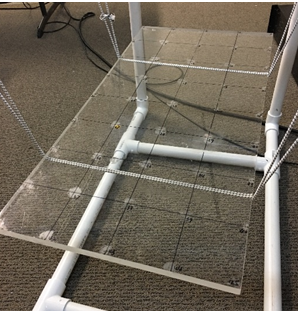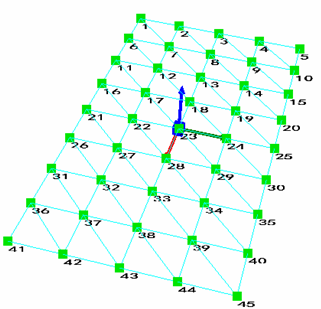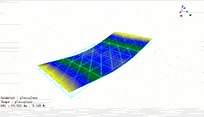EDM Modal Test Case | Plexiglass Board Hammer Impact Test
Download PDF | by Ziyuan Jiao | Graduate Student, M.S.E ‘18 | University of Michigan, Ann Arbor, United States | © Crystal Instruments 2018, All Rights Reserved.
System parameters identification problems such as natural frequencies identification and vibration mode shapes typically garner great interest in the many fields related to structural dynamics. CAD and FEA are commonly used for design and simulation processes in modern applications. Nonetheless, it is difficult to estimate dynamic characteristics for a complex system through CAD or FEA. Experimental modal analysis, one of the major subjects discussed in structural dynamics, is a theory dealing with the dynamics of a mechanical system from experiments. System parameters, such as natural frequencies, damping factors, and mode shapes can be extracted from experimental modal data based on the modal analysis theory.
Crystal Instruments provides world-leading solutions for modal testing and analysis with its newest release of Spider-80X hardware and EDM software. This note includes a simple hammer impact test on a rectangular (8” x 4”) plexiglass board (See figure below (a)) to demonstrate the basic features of EDM.
Figure a. free-free suspension of plexiglass board b. Geometry model of the plexiglass board
Plexiglass Board Model
The plexiglass board is modeled with thirty-two 1” x 1” grids and has 45 measurement points in total. (Figure (b) above). The plexiglass board is suspended from an elastic band which ensures a free-free boundary condition. The hammer impact test with roving excitation method is used in this experiment. An accelerometer is mounted on the no. 29 node shown in the figure to measure the +z (vertical) acceleration. The impact hammer roves from node no.1 to no.45 during the experiment.
Frequency Response Measurement
The frequency range of this test is set to 576 Hz, with a block size of 2048. With this setup, as shown in the following figure, a response signal from the accelerometer decays to zero within the current block size, thus no window is needed. At each test point, EDM Modal records measurement data from the linear mean of four acceptable impact data. More frames could be selected to further attenuate the signal noise, at the cost of an increased testing time.
In total, 45 FRFs are acquired after roving the hammer through all 45 nodes. They are plotted in a semi-log plot shown in the following figure.
Modal Analysis Result
With the help of a Mode Indicator Function (MIF), the natural frequencies can be labeled. By eliminating right body modes at extremely low frequencies and insignificant modes at high frequencies, 7 modes were found between 50 and 350 Hz.
From the above stability diagram, 7 modes are identified.
Mode shapes of each mode are shown below. Many settings such as changeable deformation amplitude, contour lines and plots, and frame by frame animation can help customers to intuitively understand the different mode shapes.
Mode 1 66.873Hz, damping 3.081%:
Mode 2 85.703Hz, damping 3.246%:
Mode 3 105.055Hz, damping 2.871%:
Mode 4 192.455 Hz, damping 2.799%:
Mode 5 289.883 Hz, damping 2.734%:
Mode 6 323.140Hz, damping 2.743%:
Mode 7 338.575 Hz, damping 2.588%:
Mode Synthesis
With the identified modal parameters, natural frequency, damping, and mode shapes, the synthesized FRF can be calculated. These can be compared with the measured FRF. This is useful to validate the identified parameters. The following figure demonstrates a synthesized FRF vs. Measured FRF for excitation at node no.1. The system parameter identification performs extremely well, as indicated by the 0.25% error shown in the figure below.














